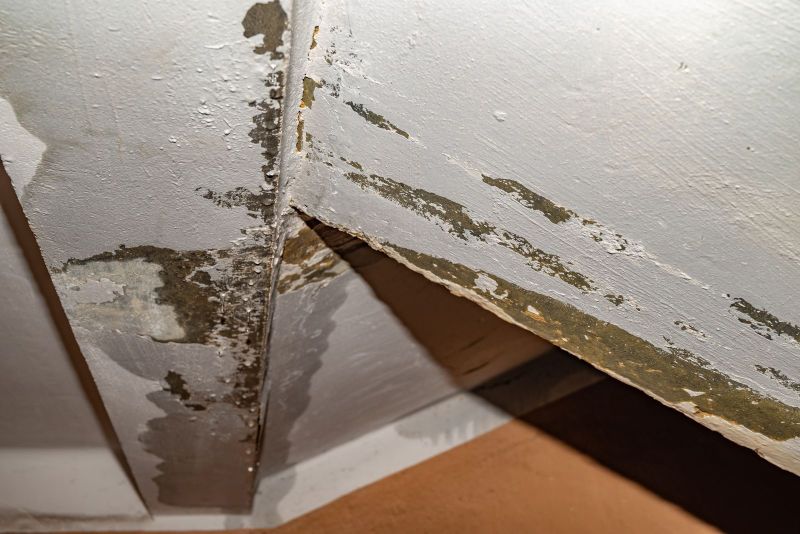Water damage can strike unexpectedly, turning your home into a battleground against moisture, mold, and structural issues. Whether caused by flooding, leaks, or burst pipes, the aftermath of water damage can be overwhelming. In this blog post, we'll explore the steps to help you navigate the water damage woes and guide your home back on track, ensuring a thorough recovery process.
- Assess the Extent of Damage:
The first step in addressing water damage is to assess the extent of the damage. Identify affected areas, including walls, floors, ceilings, and belongings. Understanding the scope of the damage is crucial for formulating an effective recovery plan.
- Ensure Safety First:
Before diving into the cleanup process, prioritize safety. Turn off electricity and gas supplies to avoid electrical hazards or gas leaks. Be cautious of potential structural damage, and wear protective gear, such as gloves and masks, to minimize health risks.
- Remove Standing Water:
Promptly remove standing water from affected areas. Use pumps, wet-dry vacuums, or buckets to extract water. The longer water sits, the greater the risk of mold growth and additional damage.
- Salvage Belongings:
Attempt to salvage belongings that are not extensively damaged. Remove furniture, electronics, and other items from the affected areas. Place them in a dry, well-ventilated space for assessment and potential restoration.
- Thoroughly Dry Affected Areas:
After removing standing water, focus on thoroughly drying affected areas. Use dehumidifiers and industrial-grade fans to expedite the drying process. Pay special attention to areas with hidden moisture, such as within walls or beneath flooring.
- Address Mold Growth Promptly:
Mold can begin to grow within 24-48 hours of water exposure. Address any visible mold growth promptly. Clean and disinfect affected surfaces, and consider consulting professionals for extensive mold remediation.
- Inspect and Repair Water-Damaged Structures:
Structural elements such as walls and floors may require inspection and repair. Water-damaged drywall, insulation, or flooring materials may need to be replaced to ensure the structural integrity of your home.
- Check for Hidden Water Damage:
Water damage is not always visible. Inspect hidden areas, such as behind walls and under flooring, for any signs of lingering moisture or damage. Address hidden water damage promptly to prevent long-term issues.
- Sanitize and Disinfect:
Water damage can introduce contaminants into your home. Sanitize and disinfect affected areas to eliminate bacteria and prevent potential health hazards. Pay extra attention to areas that came into contact with floodwater, which may contain harmful substances.
- Contact Your Insurance Provider:
Notify your insurance provider as soon as possible. Provide detailed information about the water damage, including photographs and a comprehensive list of damaged belongings. Understanding your insurance coverage is crucial for the recovery process.
- Consult Professional Restoration Services:
For extensive water damage or situations involving contaminated water, it's advisable to consult professional restoration services. Experienced professionals have the expertise, equipment, and resources to address water damage comprehensively and efficiently.
- Prevent Future Water Damage:
Once your home is on the path to recovery, take proactive measures to prevent future water damage. Regularly inspect your home for leaks, maintain gutters, and ensure proper drainage. Consider installing a sump pump if you live in an area prone to flooding.
- Invest in Waterproofing:
If your home is susceptible to water intrusion, consider investing in waterproofing measures. This may include sealing cracks in the foundation, installing a waterproofing membrane, or elevating vulnerable areas to prevent water infiltration.
- Upgrade Plumbing and Appliances:
Upgrading outdated plumbing and appliances can significantly reduce the risk of water damage. Check for leaks in pipes, replace aging water heaters, and invest in appliances with leak detection features to mitigate potential water-related issues.
- Educate Family Members:
Empower your family members with knowledge about preventing water damage. Educate them on the importance of reporting leaks promptly, avoiding water wastage, and understanding the location of shut-off valves in case of emergencies.
Water damage woes can be daunting, but with a systematic approach and prompt action, you can guide your home back on track to recovery. From assessing the extent of the damage to implementing preventative measures for the future, each step plays a crucial role in restoring your home and safeguarding it against the challenges posed by water damage.
Remember, seeking professional assistance when needed ensures a thorough and efficient recovery process. By staying vigilant, prioritizing safety, and taking proactive steps, you can overcome water damage woes and transform your home into a resilient and secure living space once again

